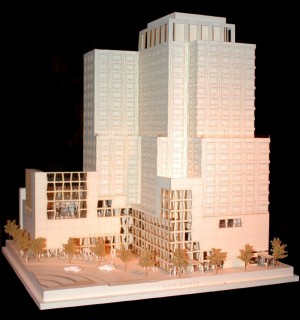The 187-Year-Old Lady Gets a Facelift and an Opening
She has a prestigious address, 1083 Fifth Avenue, just a block north of that venerable, but still brash-looking neighbor, The Guggenheim Museum. Housed in a lovely six-story, Beaux-Arts townhouse, the former residence of famed philanthropist Archer Huntington, she’s no ordinary dowager, intent on remaining forever young at whatever the cost. She is, if an institution can be so named (and why not, ships are, aren’t they?), a lady.
The National Academy was founded in 1825 by Samuel F.B. Morse, Thomas Cole and Asher B. Durand, early forerunners of what became known as the Hudson River School. Their passionate desire was to establish an institution that would serve American visual culture and break a young country’s dependency on European artistic tradition. Today, the Academy is the only institution that integrates a museum, art school, and association of artists and architects dedicated to preserving a living history of American art. Since its inception, the Academy has bestowed membership on 1,995 individuals; a roll call of the country’s finest.
The School commenced on November 15, 1876 with two Academicians and 20 students sketching by candlelight. Progressive-minded from the beginning, it was the first to accept women, even offering women’s life drawing classes for the “ladies” of the day. Growing in stature, down through the decades, acolytes included Winslow Homer, George Inness, Arshile Gorky and Willem de Kooning. And let us not be modest. The likes of Frank Lloyd Wright, I.M. Pei, Louise Bourgeois, and Helen Frankenthaler made the cut as well.
The National Academy’s Annual Exhibition has been a tradition since 1826, more than a century before the Whitney Museum’s own Biennial, which I guess one could say, makes the Whitney “the new kid in town.” The current exhibition illuminates cross-generational connections in contemporary art and architecture and features works by over a hundred entrants. Marshall Price, the curator for modern and contemporary art, emphasized in an interview with Art in America, that “there’s always been a mixing of the generations,” a thread that goes back to the founding fathers.
The “Facelift”
The minute one enters the Fifth Avenue lobby of the museum, an airy, yet intimate sensibility greets the eye. Clean and uncluttered, an open-format service desk comes immediately into view, as does a custom-designed light-box display, introducing the visitor to sample artworks from the new inductees of 2011. It’s an impressively diverse list, such as Christo, Lynda Benglis, Eric Holzman and many others, whetting the appetite for what lays ahead. The Director of Marketing, Heidi Riegler, was quick to point out that a second video installation was planned for the front window, as a further inducement to cross the threshold.
And what about the romantic early Hudson River School landscapes one normally encounters on a typical visit?
Though they are not available for viewing during the Annual, Ms. Riegler advised that, “They will keep a permanent space on the third floor, so the historic beginnings will always be there as a reminder.”
As one glances upwards, the lobby ceiling is cleverly engraved with the names of every academician since the founding. To avoid neck strain, a take-away brochure of the total membership is available on a nearby wall.
The return visitor may search in vain for the gift shop that filled the original lobby with the requisite array of catalogs and gifts for all ages, but regrets are short-lived as one wanders through a small first floor gallery to the historic rotunda—still intact and elegant as ever. In the middle of the black and white marble-tiled floor, a bold chrome plated steel sculpture by John Chamberlain is currently installed, and the integrity of its contours does not detract from the graceful lines of the spiral staircase.
From July 2010 to September 2011, the National Academy Museum and School underwent a series of renovations to enhance not only the public spaces but create new exhibition, teaching, and assembly space in the school. And yet, keeping the domestic scale of the mansion itself remained a high priority for the building committee as well as the Brooklyn architectural firm of Bade Stageberg Cox.
(Article continued on next page)

